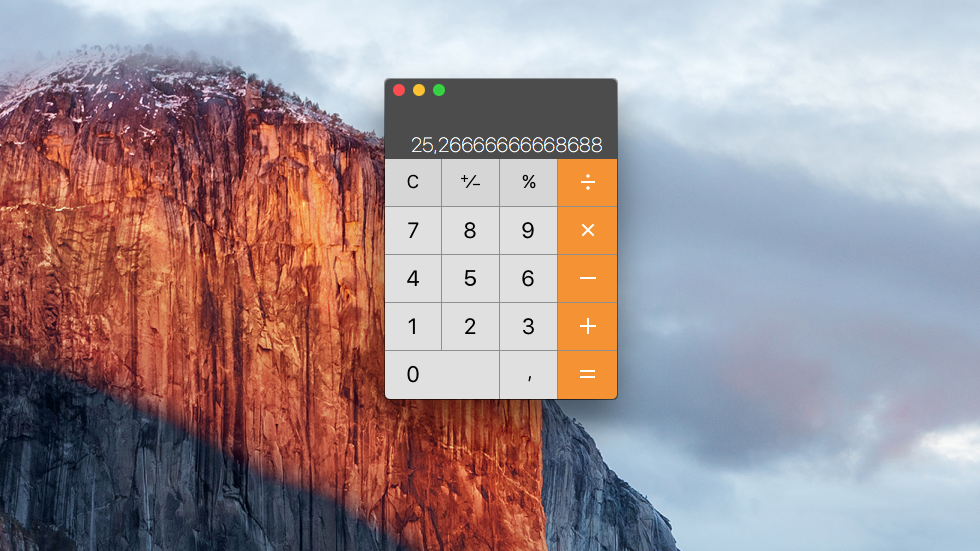

- #Hw to use macspice to calculate current how to#
- #Hw to use macspice to calculate current mac os#
- #Hw to use macspice to calculate current mac#
Where = Year of Your Transaction Date, and it is for Indian Fiscal Year Or = Year()And MonthNumberOfYear() InList (5 6 7 8 9 10 11 12))

(3) Current Fiscal Year =FormatNumber( ”#”) Where (=Year() And InList (1 2 3) And MonthNumberOfYear() InList (1 2 3 4) Or =Year()-1 And InList (4 5 6 7 8 9 10 11 12) And MonthNumberOfYear() InList (1 2 3 4) (2.2) Current Year for YTD=If(Month() InList(“January” ”February” ”March”)) Then(FormatNumber(Year()-1 ”#”)) Else (FormatNumber(Year() ”#”)) If you want to use Current Year for YTD variable then please use 2.2 formula or use 2.1 Divide the bond value by its interest rate, and then you have the figure you can use to calculate the current yield. Determine the coupon amount This involves knowing the cash value youre earning from the bond because of its interest.
#Hw to use macspice to calculate current how to#
(2.1) Current Year =If(Month() InList(“January”)) Then(FormatNumber(Year()-1 ”#”)) Else (FormatNumber(Year() ”#”)) You can learn how to calculate current yield by using the formula and the following steps: 1. Reason to make another variable for Current Date is, for validation purpose you can change date manually and then check it whether all other date variables are working properly or not. We need daily,monthly,quarterly & yearly date variables.īefore making any date variable please make a variable which holds current date. Implementation of WTD, MTD, YTD in HANA using Script based Calc View calling Graphical Calc viewĪpplying YTD in SAP HANA with SAP BO Analysis Office Simple example of Year To Date (YTD) calculation in SAP HANA MacSpice then builds a numerical model of the circuit and analyses this. Users may prepare netlists with a text editor, or derive them from a circuit diagram using a third-party schematic-capture application.
#Hw to use macspice to calculate current mac#
Let me introduce some Circuit Design Softwares that run on Mac OS.
#Hw to use macspice to calculate current mac os#
asyEDA is Window,Linux, Mac OS and Web-Based Circuit Design Software, which supports free Schematic Capture, Spice Simulation,PCB Design. This 'netlist' is a list of components and the nodes they connect to. HW TO USE MACSPICE TO CALCULATE CURRENT MAC OS. Implementation of WTD, MTD, YTD in HANA using Input Parameters only MacSpice requires a text-file description of the circuit as input. Implementation of WTD, MTD, YTD Period Reporting in HANA using Calculated Columns in Projection How To…Calculate YTD-MTD-anyTD using Date Dimensions Hope it is useful to all.Īdding related blogs here for SAP HANA Views as well. I am submitting all necessary formulas for the same. More generally, the new tissue-model suggests that the various combinations of tracheid and ray sizes present in Palaeozoic plants might have led to a higher variety of ecophysiologies than suspected based solely on the properties of individual tracheids.Here in SAP BusinessObjects BI Web Intelligence Space, it is noted that many of us are searching/asking questions on Date/Time Dimensions. Our results show that the anatomical disparity of its wood might have led to hydraulic plasticity, allowing growth in various environmental conditions. Callixylon represents the first trees with a conifer-like wood and is a major component of Late Devonian floras world-wide. Differences are shown at the tissue level that cannot be suspected at the single tracheid level. The single tracheid and new tissue models are applied to two conspecific specimens of Callixylon (Progymnospermopsida, Archeopteridales) from the Late Devonian of Morocco. The new model provides a more biologically accurate representation of fossil wood hydraulic properties. Upscaling to the tissue-level allows considering wood as a heterogeneous tissue by taking into account differences in tracheid density and the presence of rays. Here, we use the analogy between the flow of water under tension in a plant and an electrical circuit to develop an extension of Wilson’s single tracheid model to the tissue scale. Regarding hydraulics, previous studies have considered either the properties of a single tracheid or of a set of independent tubes. In the fossil record, these properties can only be investigated using models based on extant plant physiology. The origin of xylem in the Silurian was a major step in plant evolution, leading to diverse growth forms with various mechanical and hydraulic properties.


 0 kommentar(er)
0 kommentar(er)
